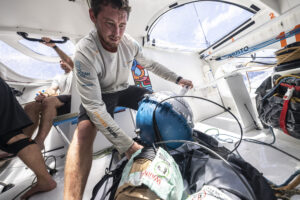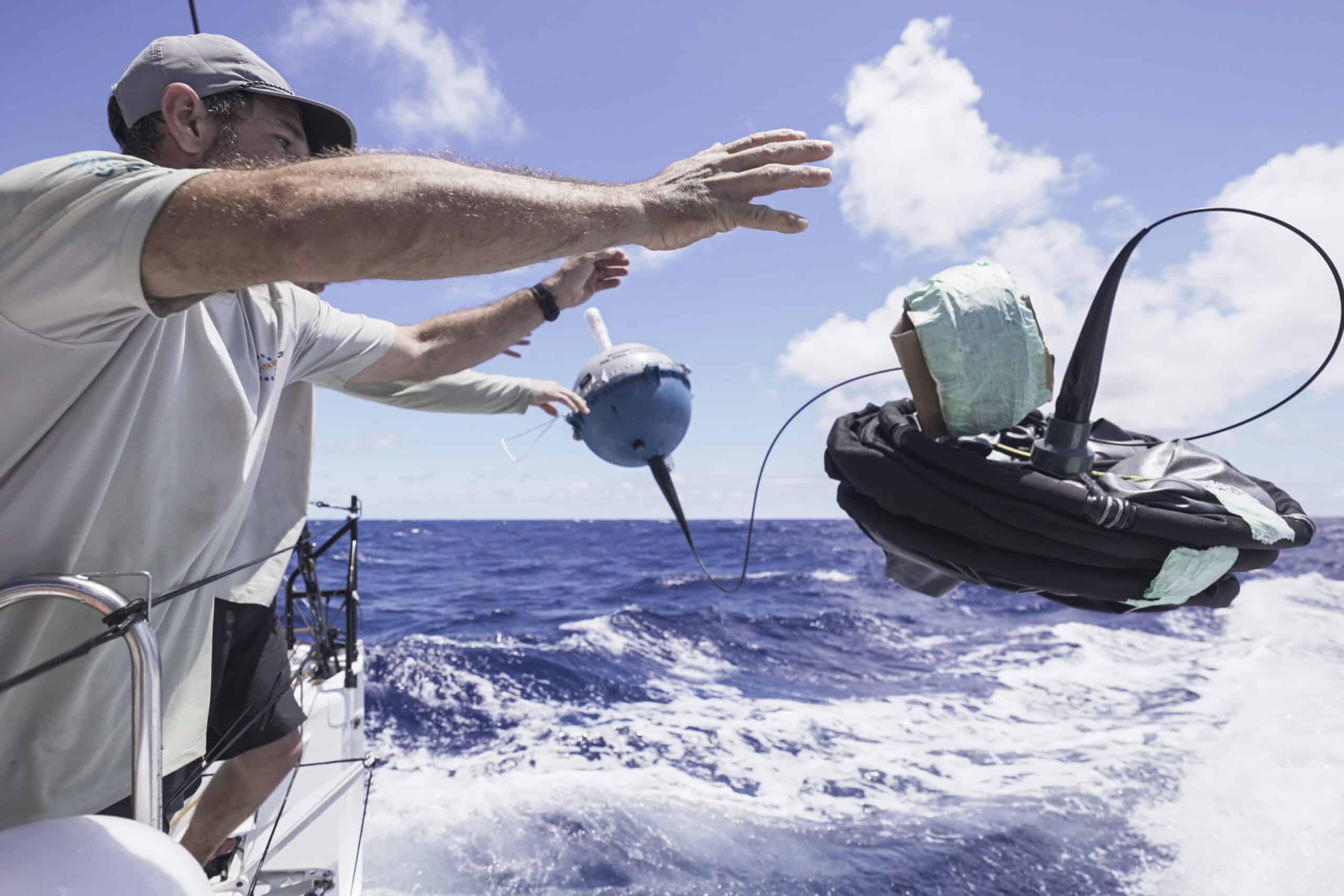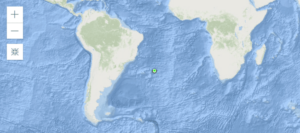BUOYS AHOY!
Racing in waters rarely visited by humans is a privilege enjoyed by very few people. And the impact of seeing Mother Nature in all her raw power, and being so far from land, can have a really tangible impact on those who experience it, as Charlie Enright described in the Oceanview Effect film. But what more can be done as the crews in The Ocean Race sail through some of the most inhospitable waters on the planet? The answer is the Race with Purpose program run by the race organizers.
When The Ocean Race was created 50 years ago, its focus was to test the toughest and most daring teams in sailing. Which crew could circumnavigate the globe and handle its most extreme offshore conditions, arriving first into port as the winners?
These days, that goal still stands, as the world’s best sailors continue to obsess over the prestige of winning The Ocean Race and having their names added to the illustrious alumni on the trophy. However, in recent editions, race organizers have added a new dimension of purpose to the fleet. The 2022-23 edition of the race has seen it become the only team sport in the world that requires all participants to take part in a science program that directly contributes to improving the understanding of the state of the ocean.
With The Ocean Race fleet passing some of the most remote places on earth – places seldom reached by scientific vessels – it gives the teams the opportunity to deploy the buoys on behalf of the scientists, and allow for the collection of vital data where none has previously been directly measured, giving valuable insights for the scientific community. A drifter buoy is a type of oceanographic instrument that is used to measure ocean currents and temperature, as well as other physical parameters in the upper layer of the ocean. The floating ball – around 40cm in diameter, floats on the surface, anchored by a drogue, which keeps it approximately in the same place.

Jack Bouttell prepares the drifter buoy for deployment.
So on Sunday, February 5, at 1430 UTC and 29d 25m 985S and 027d 06m 554W – over 810 nautical miles [1,500km or 932 miles] off the coast of Brazil at Rio de Janeiro – 11th Hour Racing Team deployed a surface drifter buoy they had carried onboard since the start of the round the world race, back in January.
Once primed by trimmer, Jack Bouttell, the buoy was thrown overboard by Jack and Simon Fisher (Si Fi )- the team’s navigator – and within an hour had started to transmit data that feeds into the Global Ocean Observing System, an international network that is run by international organizations, including UNESCO’s IOC, that aims to improve understanding of our ocean.
Watch as Jack Bouttell and Simon Fisher deploy our drifter buoy on Leg 2 of The Ocean Race.
Transmitting data hourly by satellite in real-time, our drifter buoy is one of more than one million daily observations provided to the Global Ocean Observing System for users and stakeholders around the world including most major ocean, weather, and climate prediction centers. The analyses, forecasts, and products based on these ocean observations are the bedrock of decisions across an increasing breadth of socio-economic sectors, especially in marine transportation, coastal communities, climate, agriculture, and healthy oceans.
To view our buoy go to https://www.ocean-ops.org/board# and search for the WMO: 5401601 and you can track the 11th Hour Racing Team buoy, its current position, and where it has traveled. The picture below are from Thursday, February 9, 2023.
This work undertaken by 11th Hour Racing Team supports The Ocean Race’s science program, with buoys supplied by their scientific partners, Météo-France, Met-Office, and NOAA [National Oceanic and Atmospheric Administration].
You can read about The Ocean Race’s comprehensive plan to measure microplastic pollution, gather information about the impact of climate change on the ocean, and how it collects data to improve global weather forecasting here.





